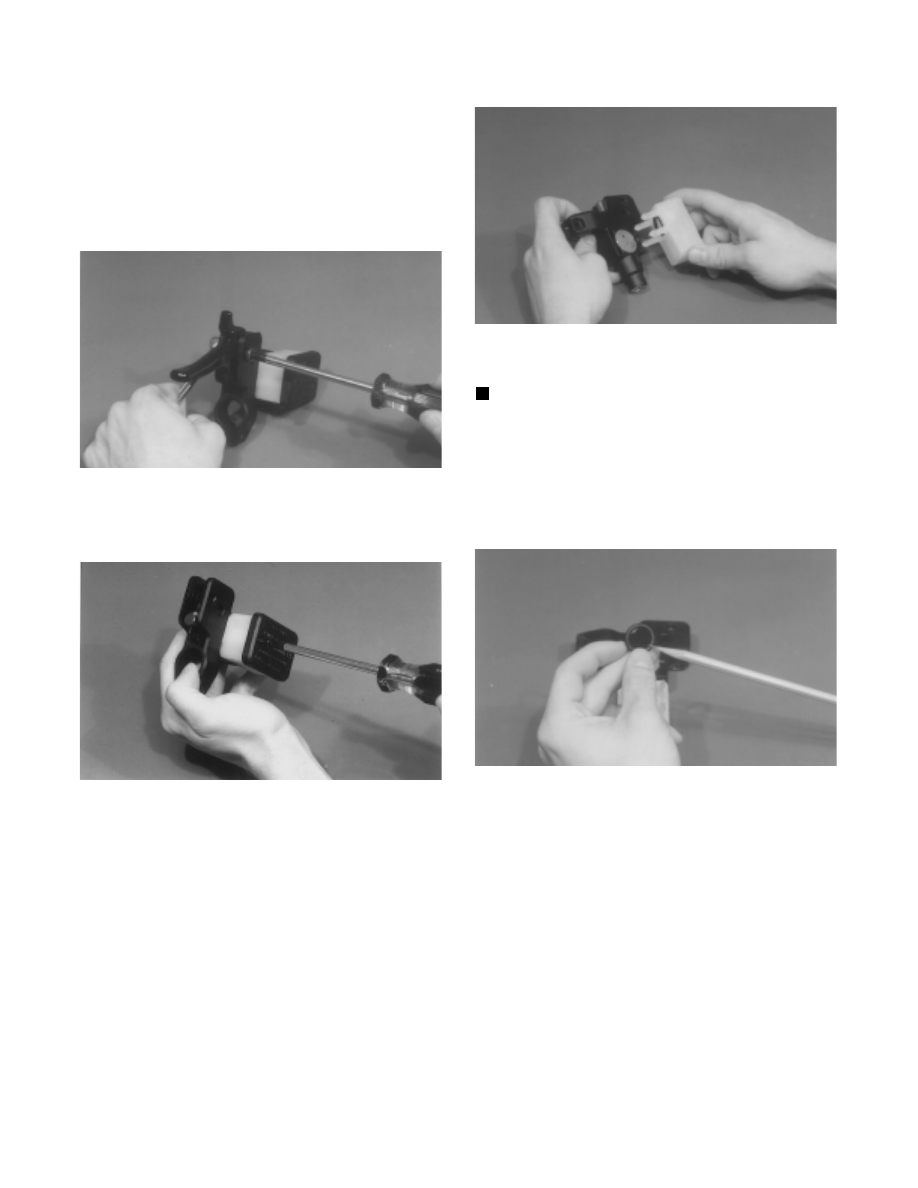Snowmobile Arctic Cat (2000 year). Instruction - part 111

4. Remove the two torx-head screws and clamp
securing the brake assembly to the handlebar; then
remove the assembly from the handlebar.
DISASSEMBLING
1. Remove the screw and lock nut securing the brake
lever.
Fig. 8-186
AF202
2. Remove the two screws securing the reservoir
cover; then remove the cover.
Fig. 8-187
AF204
3. Remove the two screws securing the reservoir to the
master cylinder.
4. Compress the locking tabs of the reservoir and
remove the reservoir from the master cylinder.
Account for an O-ring seal.
Fig. 8-188
AF205
INSPECTING
NOTE: Whenever a part is worn excessively,
cracked, or damaged in any way, replacement is
necessary.
1. Inspect the screw securing the brake lever for wear
and for cracked, stretched, or damaged threads.
2. Inspect the O-ring for deterioration and distortion.
Fig. 8-189
AF206
3. Inspect the reservoir for cracks and leakage.
4. I n s p e c t t h e b r a k e f l u i d h o s e f o r c r a c k s ,
deterioration, and the condition of the fittings
(threaded and compression).
8-50